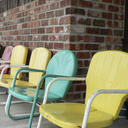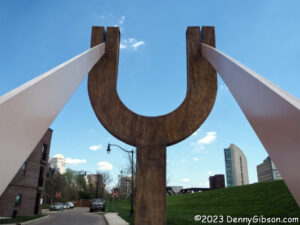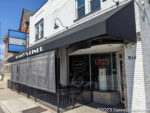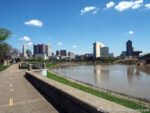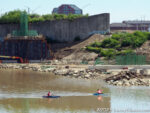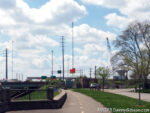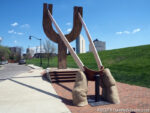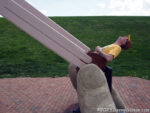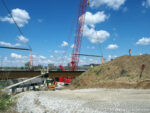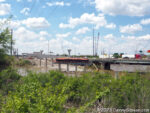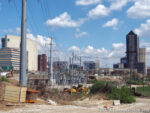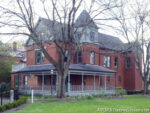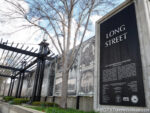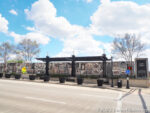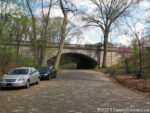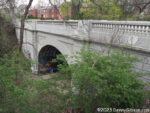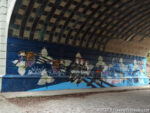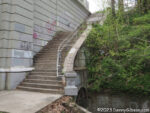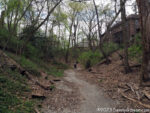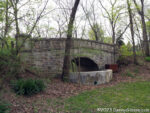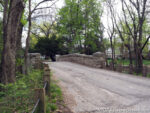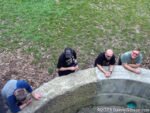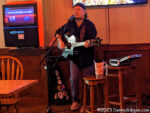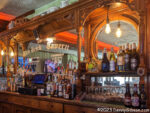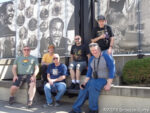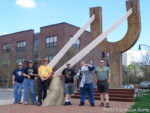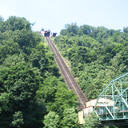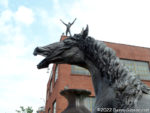I have been to the original Uranus Fudge Factory in Missouri a few times since it opened in 2015. With the opening of the second Indiana “factory” outside of Richmond in December, there are now a total of three. The first Indiana “factory” opened three years ago in Anderson. I visited both of the Indiana stores on Friday, which I guess means I could do a “My Caboddle” post on them if I wanted.
The Missouri location is marked by an elaborate giant neon sign and a twenty-foot-tall Muffler Man style statue of Uranus Mayor — and owner — Louie Keen. Richmond has the huge block letter sign in the opening photo and a pair of not-so-tall Mayors. It also has a 110-foot cross. The cross was left by the previous owner, New Creations Chapel, much like someone might move and leave behind a couch that doesn’t fit in the U-Haul truck they rented.
Mayor Keen is not ten years old, but either has a really good memory or took really good notes on every potty joke that made him laugh at that age. The potties here, of course, have jokes. The establishment’s name lets you know what to expect, but there is a line that the signs, slogans on merchandise, and endless double entendres from employees do not cross. If you can laugh like a ten-year-old boy, you’ll be just fine.
There is, naturally, merchandise aplenty. Uranus, MO, sits beside Historic Route 66, and the inventory there reflects that. The Richmond store sits beside US 40 and could be considered to be on the National Road. Road fans should note, however, that it is not on the National Old Trails Road. It is on the stretch of National Road bypassed by the Dayton Cutoff, which the NOTR followed.
And yes, there is fudge; really good fudge in a bunch of different flavors. I left with a little Praline Pecan and a little Mint Chocolate. Uranus ice cream and sodas are also available, but I skipped both in Richmond. Gotta save something for the day’s other Uranus.
Fudge and ice cream might make you think of an amusement park, and Uranus has a bit of that, too. There is a shooting gallery in a back corner and a Vortex Tunnel near the exit. Without that handrail, there is no doubt that I would have been sprawled on the floor within just a couple of steps. Outside, the animatronic dinosaurs will be turned on “any day now” and will eventually guard a miniature golf course.
I then moved on to Anderson, IN. There is no statue of Mayor Keen here. I guess that could be him dressed as an astronaut, but I doubt it. The real Louis Keen is on the premises, however. The Anderson fudge factory opened on April 1, 2022, and is celebrating its third anniversary a tiny bit early with a party on Saturday featuring a fudge eating contest. One of the employees I spoke with indicated that Louis was next door, resting up for the big day.
Standing in front of the main building is something featured at all three locations: a fully functioning Zoltar. Here is the one at Richmond. The inside is packed with fudge and merchandise.
In Anderson, ice cream is served in a separate building. I got pistachio. The Anderson Putt Pirates Mini Golf, featuring the deep blue sea, is beyond the ice cream parlor. There are some dinosaurs and other figures here and there, but they are not animatronic, and they are not hanging out at the golf course.
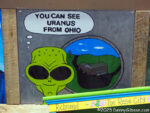 I will close with this pictorial observation from the Richmond factory and my own observation about this post’s title. When I looked for the correct plural of Uranus, I was told that it was a proper noun and there was no need for a plural. Maybe so, but that was before Louie Keen got involved.
I will close with this pictorial observation from the Richmond factory and my own observation about this post’s title. When I looked for the correct plural of Uranus, I was told that it was a proper noun and there was no need for a plural. Maybe so, but that was before Louie Keen got involved.

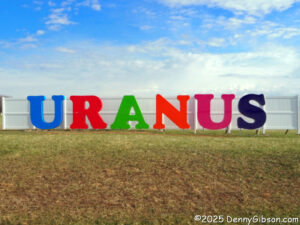
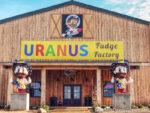
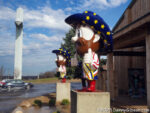


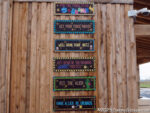
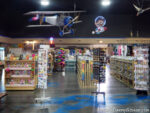
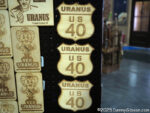

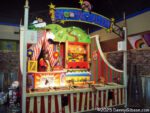
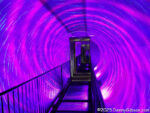
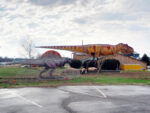
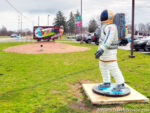
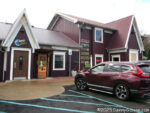

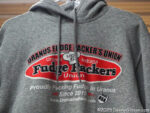
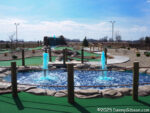
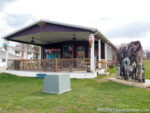
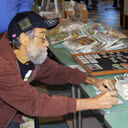
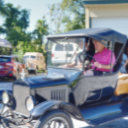
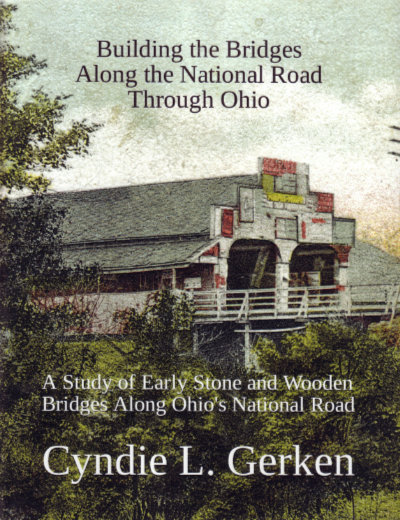 Cyndie’s done it again. As I began to write this review of Cyndie L. Gerken’s fourth book on the National Road in Ohio, I revisited my reviews of the previous three thinking I might come up with a better opening line but everything I saw just reinforced my initial thought. Cyndie has indeed done it again.
Cyndie’s done it again. As I began to write this review of Cyndie L. Gerken’s fourth book on the National Road in Ohio, I revisited my reviews of the previous three thinking I might come up with a better opening line but everything I saw just reinforced my initial thought. Cyndie has indeed done it again.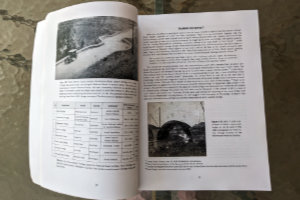 Although I certainly know better, I tend to instinctively think of big stone arches when I hear the phrase “National Road bridges”. One reason is that many of those stone bridges, some of them S-shaped, are still in existence. There were also many wooden bridges along the road but all were much shorter-lived. Building the Bridges… includes both. It identifies twenty-one covered wooden bridges built for the National Road in Ohio in addition to probably forty-some stone bridges. There were also well over a thousand stone culverts and one reason an accurate count of stone bridges is difficult to produce is that not everyone followed the same rules when distinguishing culverts and bridges. Span length was and is the distinguishing characteristic. Twelve feet, twenty feet, and no doubt some other numbers of feet were used to make the distinction and some reports did not distinguish the two at all.
Although I certainly know better, I tend to instinctively think of big stone arches when I hear the phrase “National Road bridges”. One reason is that many of those stone bridges, some of them S-shaped, are still in existence. There were also many wooden bridges along the road but all were much shorter-lived. Building the Bridges… includes both. It identifies twenty-one covered wooden bridges built for the National Road in Ohio in addition to probably forty-some stone bridges. There were also well over a thousand stone culverts and one reason an accurate count of stone bridges is difficult to produce is that not everyone followed the same rules when distinguishing culverts and bridges. Span length was and is the distinguishing characteristic. Twelve feet, twenty feet, and no doubt some other numbers of feet were used to make the distinction and some reports did not distinguish the two at all.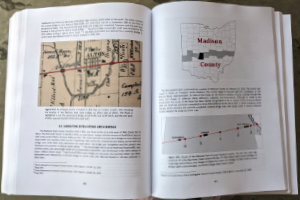 After telling us about as many of the bridge builders as she could identify, Gerken touches on some of the iconic National Road bridges east of Ohio, including the Wheeling Suspension Bridge, before beginning a county-by-county trek across the state. Each county chapter begins with a thumbnail of the county and the National Road through it. A map locating the National Road bridges in the county appears very early in each chapter. Sections on each of the bridges and some of the culverts in the county appear also in east-to-west sequence. Just as some bridges east of Ohio were touched upon preceding the border-to-border coverage, a few in Indiana follow it.
After telling us about as many of the bridge builders as she could identify, Gerken touches on some of the iconic National Road bridges east of Ohio, including the Wheeling Suspension Bridge, before beginning a county-by-county trek across the state. Each county chapter begins with a thumbnail of the county and the National Road through it. A map locating the National Road bridges in the county appears very early in each chapter. Sections on each of the bridges and some of the culverts in the county appear also in east-to-west sequence. Just as some bridges east of Ohio were touched upon preceding the border-to-border coverage, a few in Indiana follow it.  At a minimum, the location of each structure and what it crossed is given. The builder or builders are identified if known and, thanks to some pretty good sleuthing, many of them are. Beyond that, the information given for each bridge or culvert varies widely but it is a natural variation. For unnamed culverts over unnamed intermittent streams, location might be just about the only thing known. For major structures, lots of additional information might be included and usually supported by various graphics. Topographic maps are fairly common and there are lots of historic photographs and drawings. Plenty of modern photos also appear and if a structure is still standing there’s a good chance that the book contains a very modern picture of it taken by the author herself. Stories about events associated with happenings at or near a particular bridge can pop up anytime and are often fleshed out by reproducing contemporary reports.
At a minimum, the location of each structure and what it crossed is given. The builder or builders are identified if known and, thanks to some pretty good sleuthing, many of them are. Beyond that, the information given for each bridge or culvert varies widely but it is a natural variation. For unnamed culverts over unnamed intermittent streams, location might be just about the only thing known. For major structures, lots of additional information might be included and usually supported by various graphics. Topographic maps are fairly common and there are lots of historic photographs and drawings. Plenty of modern photos also appear and if a structure is still standing there’s a good chance that the book contains a very modern picture of it taken by the author herself. Stories about events associated with happenings at or near a particular bridge can pop up anytime and are often fleshed out by reproducing contemporary reports.